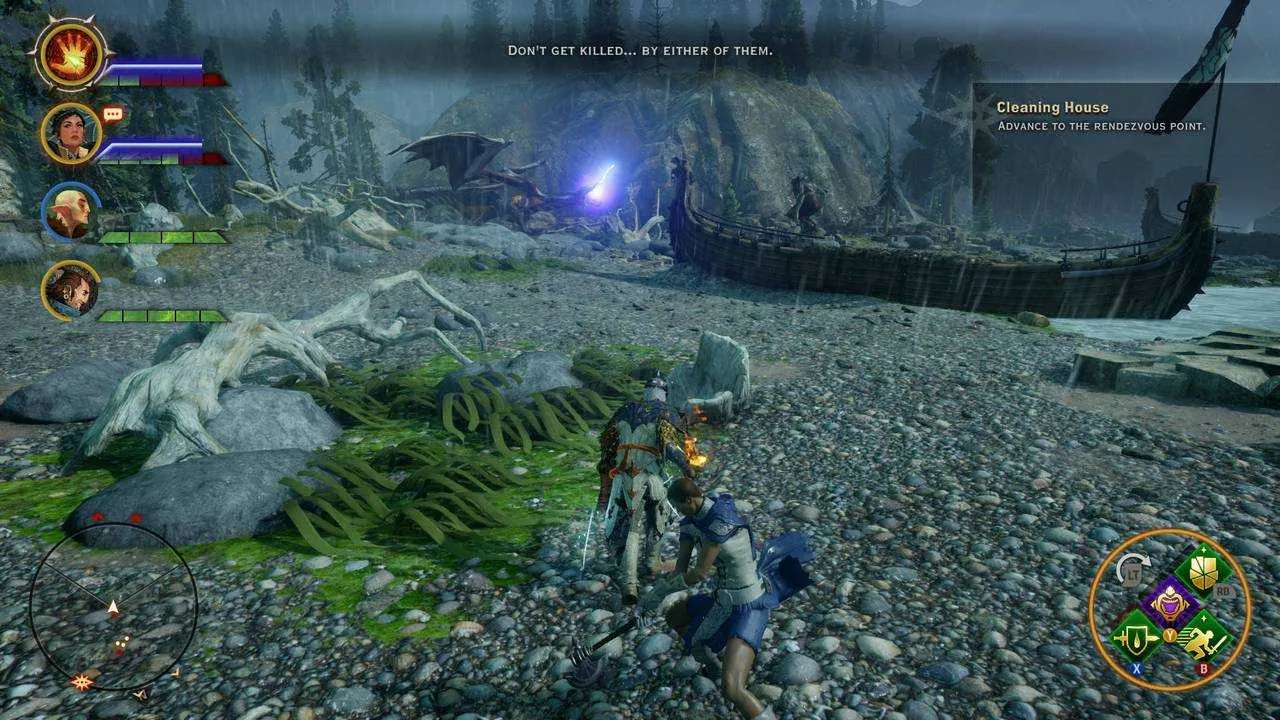
Dragon Age: Inquisition: A Review
Contents
Dragon Age: Inquisition plunges players into the heart of Thedas, a world on the brink of collapse. Following the escalating conflict between mages and templars, the Divine Justinia V calls for a peace conference at the Temple of Sacred Ashes. However, a catastrophic explosion rips through the temple, decimating those present and unleashing a demonic invasion. With the Divine dead, Thedas descends into chaos, and a new hero must rise to quell the encroaching darkness.
 Dragon Age: Inquisition Key Art
Dragon Age: Inquisition Key Art
Saving Thedas: A Compelling Narrative
BioWare’s mastery of storytelling is undeniable, and Dragon Age: Inquisition builds upon the rich narrative foundations of its predecessors. This epic RPG weaves a compelling tale of political intrigue, personal struggles, and world-altering decisions. As the Inquisitor, players assemble a diverse team of nine companions, each with unique personalities, backstories, and motivations. Building relationships with these characters is crucial, as their individual stories intertwine with the overarching narrative. BioWare’s masterful character development imbues each companion with realistic flaws and virtues, making their personal journeys deeply engaging.
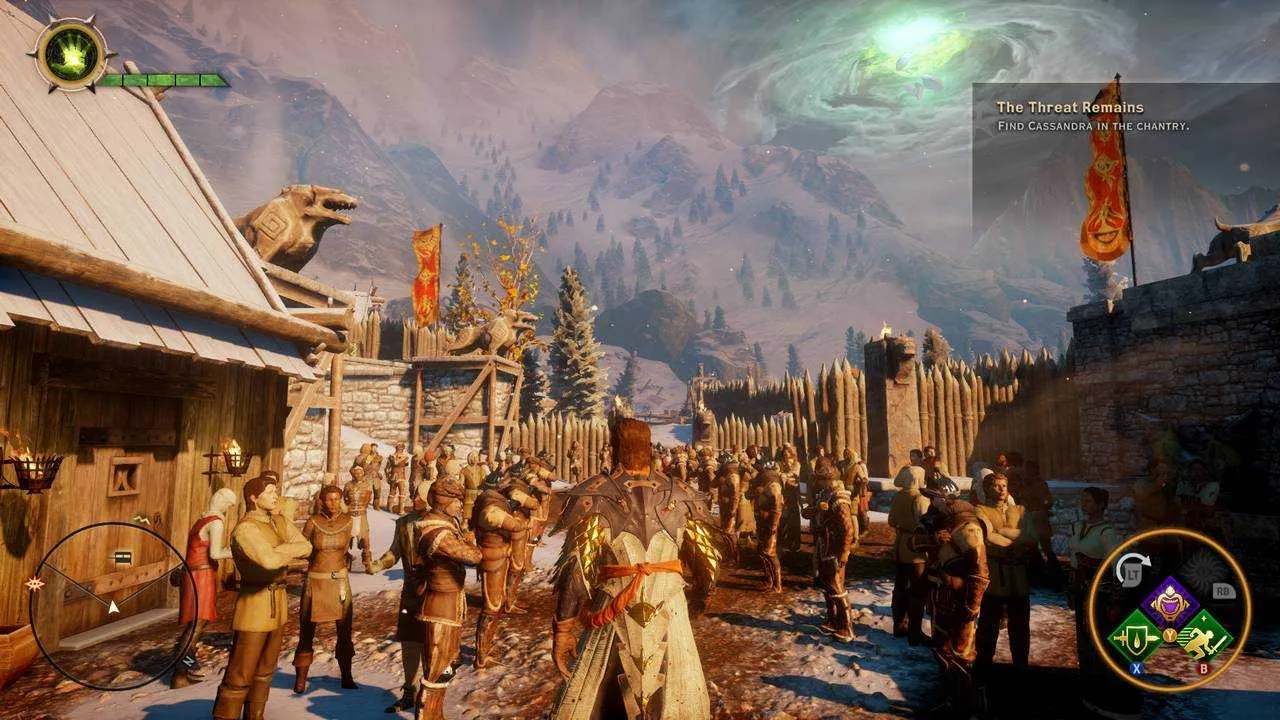 Companions in Dragon Age: Inquisition
Companions in Dragon Age: Inquisition
The player’s choices resonate throughout the game, shaping the fate of Thedas and its inhabitants. Unlike previous Dragon Age titles, decisions are not simply categorized as good or evil, but rather as complex choices with far-reaching consequences. Decisions from previous games also carry weight, impacting the narrative and highlighting the interconnectedness of the Dragon Age universe. Thedas feels like a living, breathing world, grappling with realistic political and social issues, mirroring the complexities of our own history.
Refined Combat and Tactical Options
Dragon Age: Inquisition refines the combat system of its predecessors, offering a more balanced and engaging experience. Gone are the overpowered healing abilities and unlimited potions, replaced with a more strategic approach to combat. Each character class boasts unique strengths and weaknesses, encouraging players to utilize tactical thinking and environmental awareness. Boss encounters are particularly challenging, requiring players to target specific body parts to disable enemy attacks or exploit vulnerabilities.
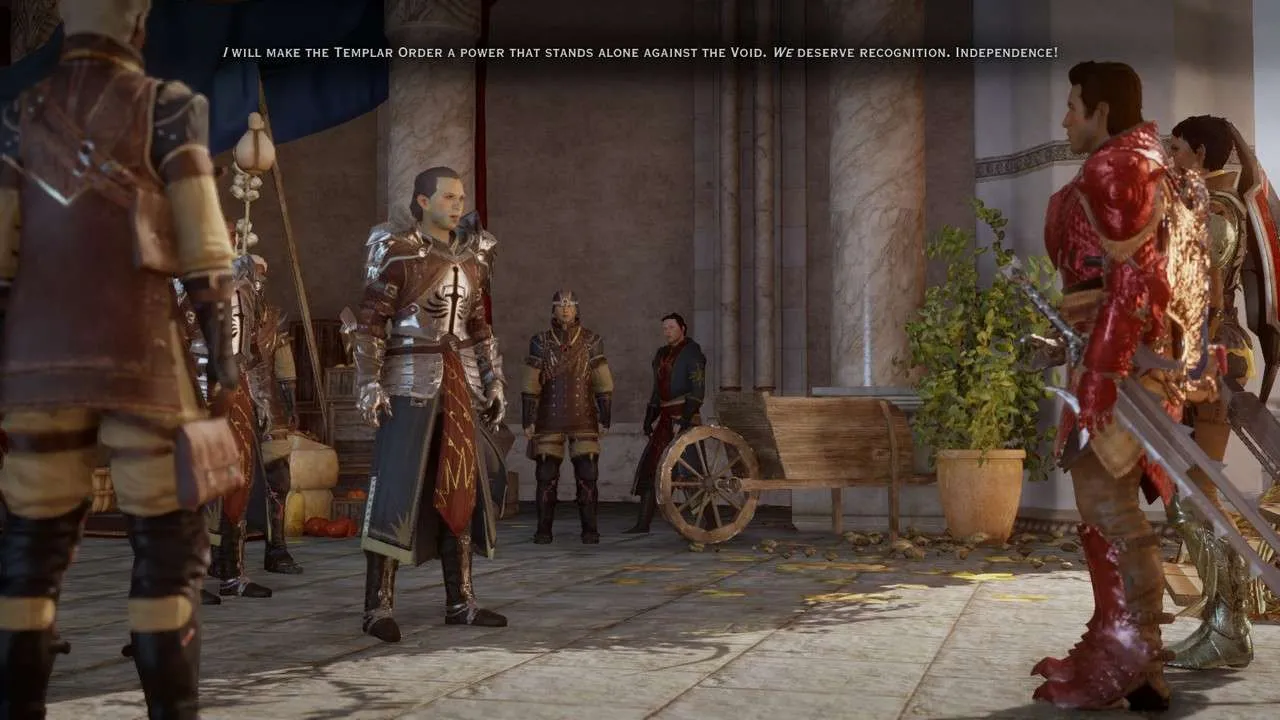 Combat in Dragon Age: Inquisition
Combat in Dragon Age: Inquisition
The tactical camera from Dragon Age: Origins makes a welcome return, allowing players to pause combat and issue commands to their party. While the tactical options are streamlined compared to Origins, they still offer a significant level of control over combat encounters. This strategic layer adds depth to the gameplay, encouraging players to carefully consider their party composition and skill usage.
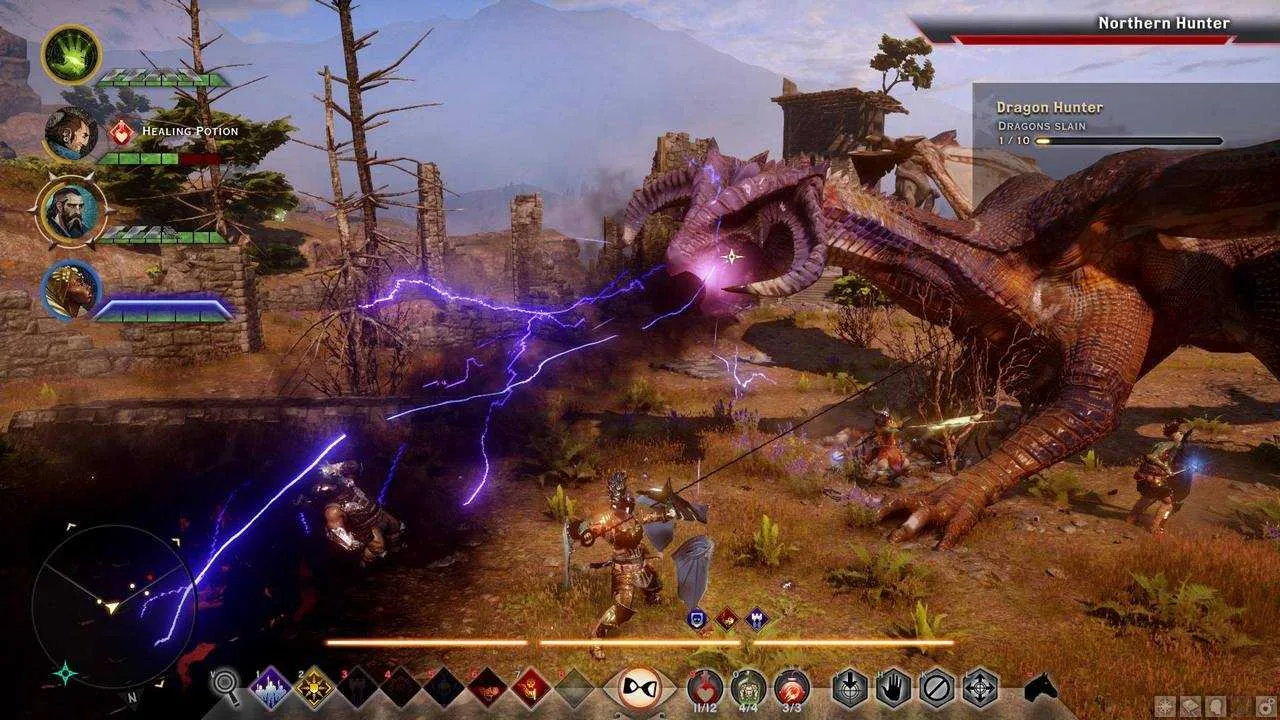 Tactical View in Dragon Age: Inquisition
Tactical View in Dragon Age: Inquisition
Extensive Customization and Crafting
While the initial armor and weapon options might seem limited, Dragon Age: Inquisition boasts a robust crafting system that allows for extensive customization. Players can modify armor pieces with various upgrades, enhancing their stats and altering their appearance. This system eliminates the traditional trade-off between fashion and function, allowing players to create stylish and powerful gear.
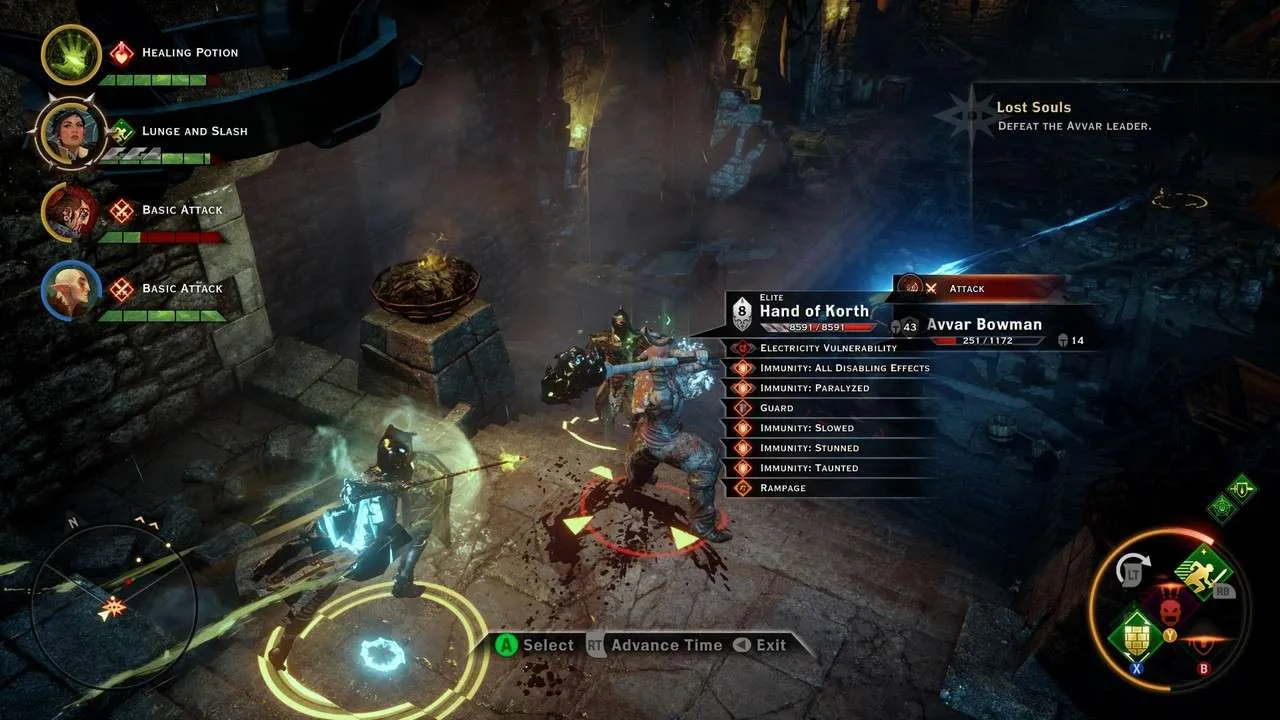 Crafting in Dragon Age: Inquisition
Crafting in Dragon Age: Inquisition
The crafting system is driven by resource gathering, encouraging exploration and careful management of inventory. Unlike previous games, Dragon Age: Inquisition dedicates a specific inventory slot for crafting materials, streamlining the process and preventing clutter. The absence of fixed crafting recipes adds another layer of experimentation, as different material combinations yield unique results in terms of stats, appearance, and color.
A Vast World Ripe for Exploration
Dragon Age: Inquisition features a sprawling world map, encompassing ten diverse regions across the nations of Ferelden and Orlais. Each area boasts unique geography, weather patterns, flora, and fauna. The game seamlessly integrates quests into the world, creating a more organic and immersive experience. Random encounters, hidden dungeons, and dynamic events abound, rewarding exploration and curiosity.
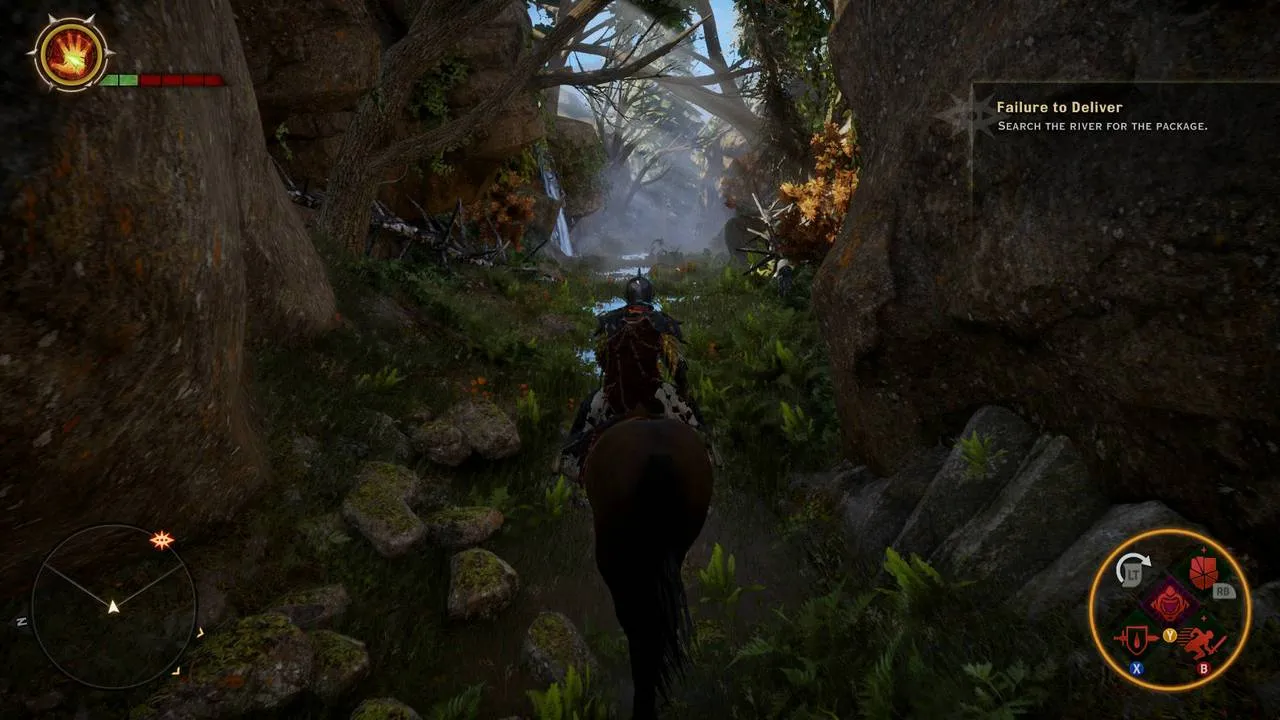 Exploring Thedas in Dragon Age: Inquisition
Exploring Thedas in Dragon Age: Inquisition
Powered by the Frostbite 3 engine, Dragon Age: Inquisition is visually stunning, with detailed environments, impressive weather effects, and realistic character models. The soundtrack, composed by Trevor Morris, complements the game’s epic scope, creating a truly immersive experience.
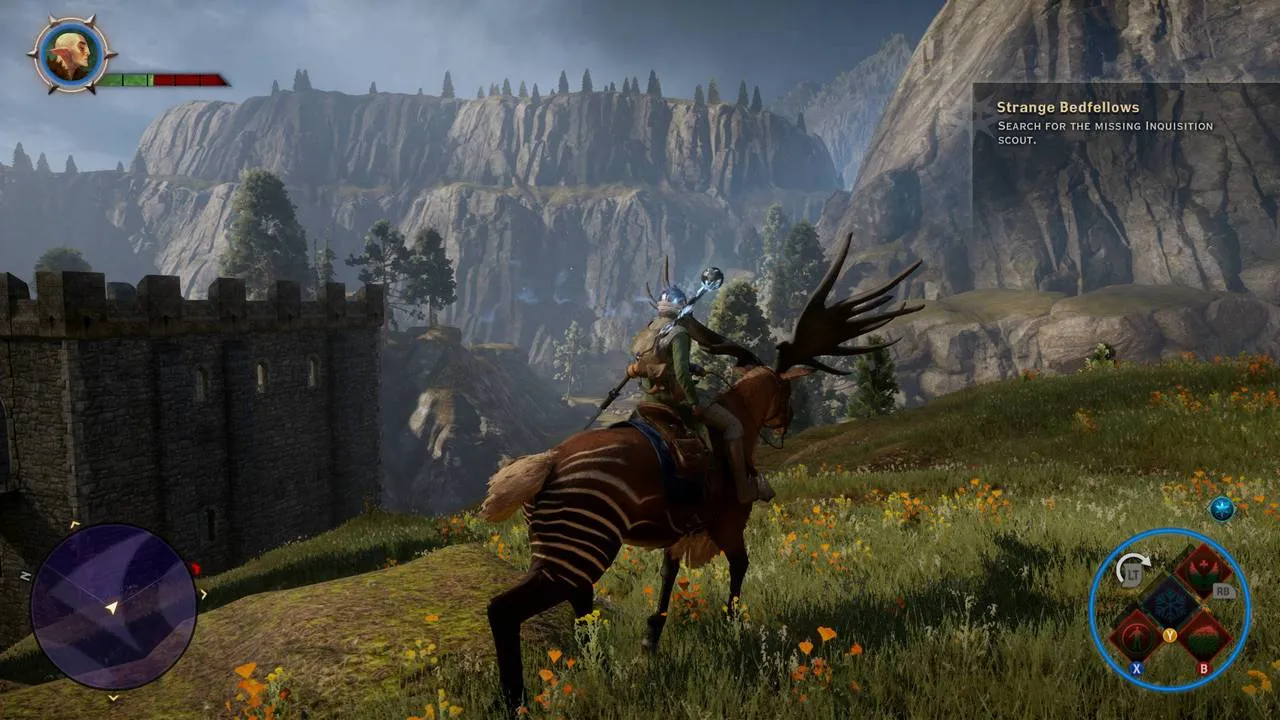 Environment in Dragon Age: Inquisition
Environment in Dragon Age: Inquisition
Engaging Multiplayer Component
Beyond the expansive single-player campaign, Dragon Age: Inquisition also features a compelling multiplayer mode. Inspired by Mass Effect 3’s multiplayer, this mode tasks players with completing objectives and defeating enemies in cooperative gameplay. Players can choose from various classes and races, each with unique abilities and playstyles. A progression system, including character customization and crafting, adds depth and replayability to the multiplayer experience.
Minor Drawbacks
Despite the improvements to the tactical camera, the combat system still leans towards action-oriented gameplay. The limited tactical commands can feel restrictive for players seeking a more strategic experience. PC players might also find the console-centric controls and interface somewhat cumbersome.
 Fighting a Dragon in Dragon Age: Inquisition
Fighting a Dragon in Dragon Age: Inquisition
Conclusion
Dragon Age: Inquisition is a triumph of storytelling and world-building, offering a deeply engaging RPG experience. While minor flaws exist, the game’s compelling narrative, refined combat, extensive customization, and vast world make it a must-play for fans of the genre. The engaging multiplayer component adds further value, providing hours of cooperative fun.





Comments (0)